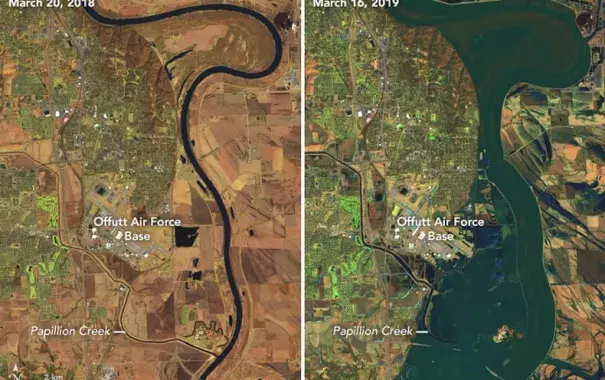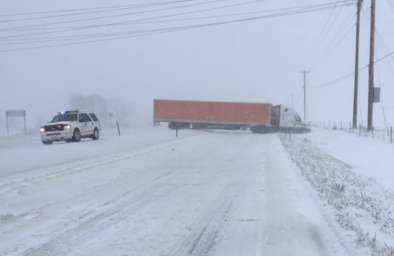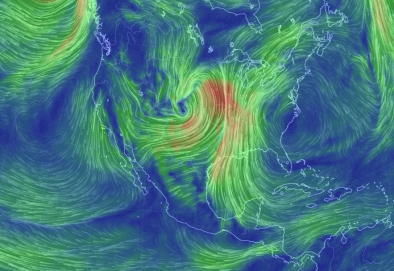Record Floods Could "Test the Limits" of Midwest Defenses

Low-lying communities from Minnesota to Missouri are bracing for what could be the Mississippi Basin’s worst flooding since 1993 as temperatures rise and rainstorms continue to track over areas with deep winter snowpack.
The weekend brought some of the worst flooding in decades to towns along the Missouri River and its tributaries in Nebraska and Iowa, killing two and forcing evacuations from communities south of Omaha, Neb.
By yesterday, the focus was shifting south and east toward Kansas City and then to the confluence of the Missouri and Mississippi rivers north of St. Louis.
...
The Army Corps was also working with local levee districts on sandbagging and other temporary flood control measures along the river as far east as Alton, Ill. Officials reported at least nine levee breaches along the Missouri south of the Platte River and four breaches of nonfederal levees closer to Kansas City.
The National Weather Service said it expected the Missouri to crest later this week in St. Joseph, Mo., at the third-highest level ever recorded.
Hundreds of homes were flooded in Nebraska and Iowa as of yesterday afternoon, and many thousands of acres of corn and soybean fields are inundated with water, according to local media reports.
...
NOAA reported earlier this month that the winter of 2018-19 was the wettest on record, and it was accompanied by marked swings in temperature.
Spring thaw and snowmelt are routine in the northern half of the country. But experts say the current flood crisis is exacerbated by several conditions occurring at once. Heavy rain is falling onto a dense layer of snow atop frozen ground. With little or no soil absorption, the water is forced to run off into streams and rivers.
Scientists say such events may become a greater concern with climate change, as rising average temperatures mean precipitation may fall more variably—as both rain or snow—over the northern half of the country. Climate projections also suggest that heavy precipitation events will become more severe in many places.
Related Content




